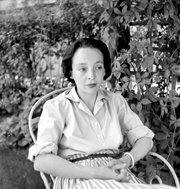

Duras wrote The Lover as a way to self-discovery and in doing so she was able to stay objective. Our highly-educated and experienced writers have at least Bachelor’s degrees to. She leaves herself vulnerable for criticism by casting parts of herself as characters in her writing. If you are desperately looking for a reliable writing service to get some homework The Role Of Parents In, The Lover, Duras, Themes help look no further, because you have found us Do My The Role Of Parents In, The Lover, Duras, Themes Homework Online service is ready to solve any of your academic problems. In doing so, she also casts herself in each character in the book.įrom these reviews I am able to conclude that Duras was a daring writer.

She puts herself in the shoes of each character in order to objectify herself. Duras uses The Lover a her road to self-discovery. However, “any question of the text’s “truth” (which might try to assert the narrative as fiction) fails to recognize that the text means to write about how Duras views herself, how Duras desires to relate her identity in the past as well as in the present”. When Duras uses “i” it is autobiographical, and when it is “she” it is fictional. The change between first and third person is described to be Duras’s way of differentiating between what was fictional and what was real. It also explains why the novel can not be called an autobiography without calling it fictional as well. Objectifying the Subjective: The Autobiographical Act of Duras’s The Lover by Laurie Edson and Jeffrey Staley, explains why The Lover is written in both first and third person.

Morgan says, “ The Lover creates a distinctive style all its own.” It is a fluid mix of realism and fiction. The author, Janice Morgan, describes Duras’s writing in The Lover as a form of art. “Fiction and Autobiography/Language and Silence: ‘The Lover’ by Marguerite Duras,” gives credit to Duras and her creativity. Leah Hewitt describes The Lover as, “a revelation of the author’s life or a simplistic, illusory explanation of her other works.” Another speaker argued that the novel could not be “purely” literary nor could it be “purely” referential. An unnamed speaker at a conference she attended a few years ago criticized the genre of being a literary fiction instead of an autobiographical work. Leah Hewitt’s writes about the criticism of The Lover that she hears at a conference. These reviews will provide the reader with other perspectives of The Lover.

Lastly, Laurie Edson and Jeffrey Staley’s Objectifying the Subjective: The Autobiographical Act of Duras’s The Lover, describes the method to Duras’s madness and her reasoning to why she narrated the book the way she did. Leah Hewitt’s Autobiographical Tightropes: Simone de Beauvoir, Nathalie Sarraute, Marguerite Duras, Monique Wittig, and Maryse Condé, explores Duras’s use of autobiographical choice and compared her work to other french feminist writers and “ Fiction and Autobiography/Language and Silence: ‘The Lover’ by Marguerite Duras ” by Janice Morgan analyzes Duras’s writing style. The Lover will be the first creation of a brandnew dance company that will be established in Hannover.The Lover by Marguerite Duras is a what most critics call autobiographical and fictional. In combination with Goecke’s choreographic artistic language is bound to produce an outstanding and compelling journey for the audience. This story is the perfect template for a Contemporary expressive piece. What’s especially touching, is that its closed and open in the same way experience, and even artistic process, is. The story approaches the affair and its consequences from a multitude of angles, which makes it raw and almost tangible. In The Lover, the multitudes of events that can exist within a single experience, and the way those occurrences pour outward over the course of a life create a vivid touching picture for the audience. So much of the novel’s obsessive quality is laid bare before the reader: youth, death, the scars carved out by history and experience and captures the essence as opposed to the reality. Autobiographical novels are sometimes associated with youth, but The Lover was published in 1984, when Duras was 70, which is to say it was a work that arrived late in her career as a writer-and also late in her career as a serious alcoholic, though The Lover was written during a period of relatively new sobriety.


 0 kommentar(er)
0 kommentar(er)
